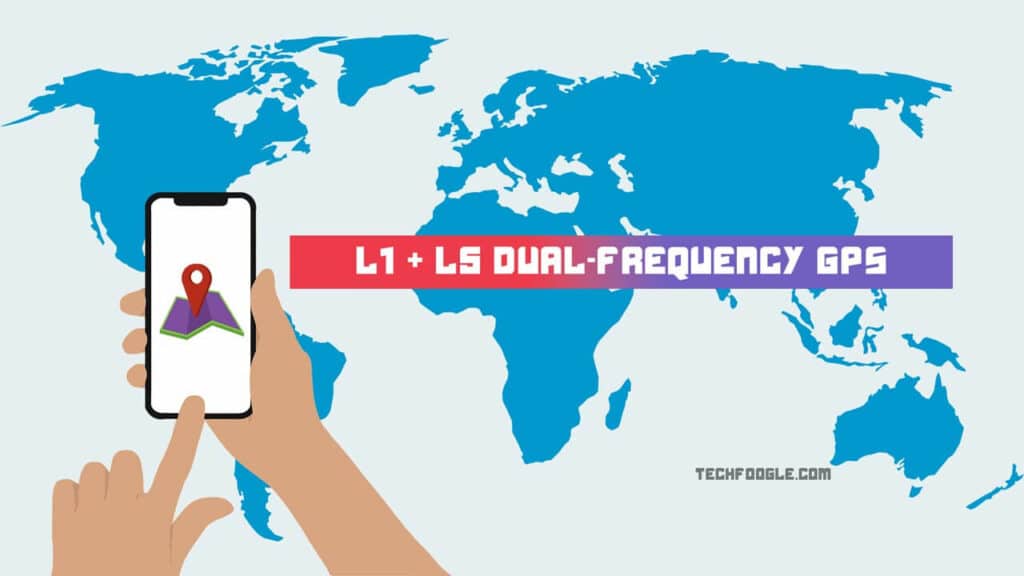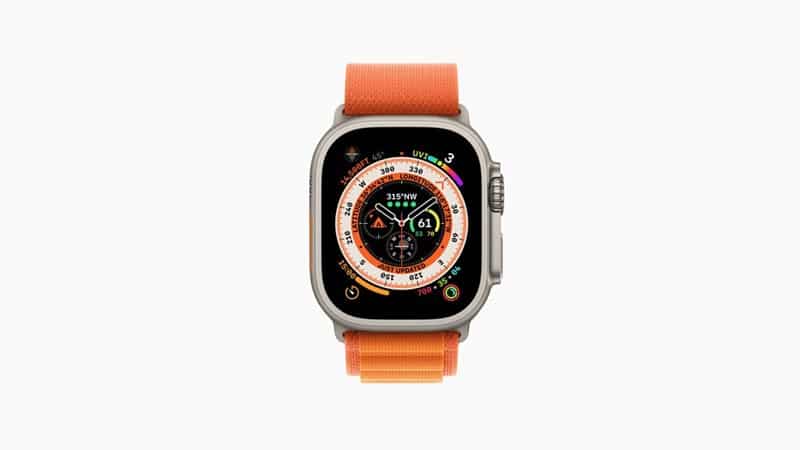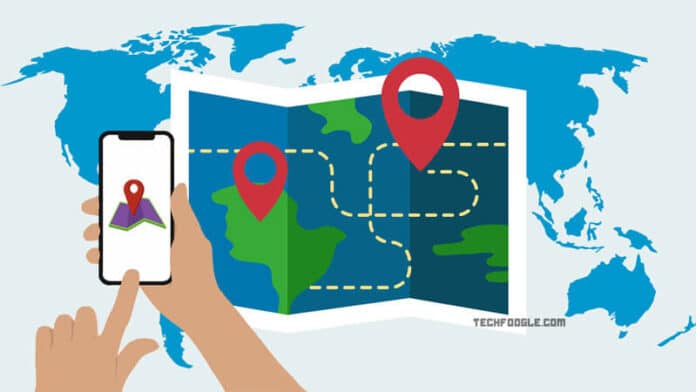Dual-Frequency GPS is a new feature in the iPhone 14 Pro Series and Apple Watch Ultra, perfect for those who love adventure. The feature helps get a GPS signal in remote areas with limited connectivity. It also includes an emergency SOS via satellite feature, which is very helpful if you’re out in the middle of nowhere.
Table of Contents
Dual-Frequency GPS Bands

Dual-Frequency GPS is a new technology that improves location accuracy. It uses two bands, L1 and L5, and pairs them together to provide more precise results. L1 is the oldest GPS band but is ineffective at passing through tall buildings or large trees. The L5 band addresses this problem by boosting the signal. It also improves signal processing.
The new iPhones support dual-frequency GPS, allowing them to receive signals from two GPS satellites simultaneously. It improves the location accuracy of apps. This feature is also available on the Apple Watch Ultra.
Dual-frequency GPS is a relatively new technology, but select Android phones have been using it since last year. The technology uses two satellites, one at L1 and one at L5. L5 signals are more accurate and more robust in obstacle detection.
Dual-Frequency GPS is a feature on the iPhone 14 Pro series and the Apple Watch Ultra. It allows the iPhone to receive signals from both L1 and L5 satellites. It increases the bandwidth of the GPS signal and makes it possible to pass through obstacles. Dual-Frequency GPS also works with Apple Maps, improving location accuracy.
(Also see: iPhone 14 vs iPhone 13 Full Specs Comparison)
GPS Frequencies
GPS frequency refers to the radio frequency used to communicate with satellites. The GPS frequency range is comprised of five different bands. The L1 and L2 bands are the primary frequency bands used by GPS satellites. The L2 band is more sensitive than the L1 band and can travel through more obstacles. This higher frequency allows GPS receivers to receive more information, reducing the possibility of error. GPS frequency technology is used in many applications today, including autonomous vehicles, smart cities, and intelligent transportation systems.
There are two types of GPS signals: public and encrypted. General encoding is less sensitive and enables lower-resolution navigation, while encrypted encoding is more sensitive and used by the U.S. military. Both encoding types identify different satellites and their respective positions in the sky. The military codes used in GPS are the coarse-acquisition (C/A) code and the precision (P(Y) code.
The GPS frequency is often affected by nearby signals, including mobile phone signals and Ligado, which can cause interference to GPS receivers. It is essential to use sophisticated GPS receivers with advanced filtering systems to combat this interference. The Septentrio AIM+ RF-impedance mitigation technology is the industry standard for this, and it can mitigate simple narrowband and complex wideband and pulse signals.
GPS has many accuracy commitments. For example, the government commits to providing a signal with a global average user range error (URE) of 2.0 m. While this is much better than the actual performance of GPS, the accuracy of the user’s position is dependent on many factors, including satellite geometry and local factors.
LightSquared is a company that distributes GPS devices. It has many wholesale customers, including Sharp and C Spire. These companies buy the integrated satellite-ground-based service and resell it on devices. The FCC has conditionally authorized the company to use 1525-1559 MHz, which is the GPS band. However, some GPS receiver manufacturers have expressed concerns about this plan and have filed complaints with the FCC.
This commercial service provides users with a more reliable encrypted and centimeter-scaled signal. However, it also costs the providers money. While GPS users are accustomed to receiving service for free, the commercial signal will be a new development for the system. It means users will pay for it, which can be many people turn it off.
In civilian applications, GPS is widely used for navigating and determining position. Its accuracy depends on many factors, including interference in the ionosphere, signal blocking from tall buildings, and the multipath effect. GPS technology has also been integrated into computer systems, mobile communications, and automotive navigation systems.
While there are no laws regarding GPS frequency, there are some concerns. According to the USGPSIC, GPRs should operate at least a half-wavelength above the restricted band of 150 MHz. If this is not possible, GPRs may not be able to work correctly and could cause significant leakage.
Apple Watch Ultra: Battery Life

The Apple Watch Ultra’s battery life is among the best of any Apple Watch model. It can last several days without charging, which is excellent considering this sports watch. It’s not quite up to endurance or sports watches’ battery life. However, it is still impressive, and its dual-frequency GPS helps it keep pace with the competition.
The battery life of the new Apple Watch Ultra is among the best in the company’s history, with a dash of up to 36 hours with regular usage. However, it can go as long as 60 hours when you activate the new ultra-low-power mode. The device also has a unique charging puck with an upgraded braided cable. In addition, the Apple Watch Ultra features three built-in microphones that improve sound quality.
The Apple Watch Ultra’s dual-frequency GPS is also compatible with iPhone 14 Pro series. It can track various workout types and detect whether you are walking, running, or cycling. Automatic track detection is also coming to the Apple Watch Ultra later this year. The device also has sensors that measure blood oxygen levels. A healthy person’s blood oxygen saturation is between ninety and one hundred per cent, but any lower than that may indicate a severe health condition.
Apple’s Dual-Frequency GPS Accuracy
Apple’s dual-frequency GPS combines L1 and L5 bands to provide more accurate location data. The L5 band is also more powerful and can detect unwanted reflected signals. With this added feature, Apple’s new iPhones should achieve centimeter-level accuracy. In addition to improved accuracy, dual-frequency GPS should offer faster data transmission.
The iPhone 14 Pro series and Apple Watch Ultra have dual-frequency GPS. Using the L1 and L5 frequencies, these devices receive signals from multiple satellites. It allows them to obtain a better signal in dense environments. They also have more bandwidth to pass through obstructions.
The Apple Watch Ultra has a titanium finish to make it easier to handle and is always connected. While cellular watches operate independently of smartphones, they still require a phone for initial setup and configuration. This limitation may limit its appeal to users of other mobile devices. The titanium-finished watch is the first Apple Watch model with a titanium-like finish. Apple designed this finish to make the larger unit easier to use.
Apple Watch Ultra: Wayfinder watch face

If you’re interested in getting an Apple Watch Ultra, you’ll be happy to know that the new model also includes dual-frequency GPS. Unlike the regular iPhone 14, the Ultra can pinpoint your location with GPS satellites and a single-band one. Both devices also have better microphones and speakers, including a siren. Dual-frequency GPS provides a higher degree of accuracy than single-band technology.
The Apple Watch Ultra was tough enough to withstand rough conditions and various activities. Its titanium case provides the perfect balance between weight and ruggedness.
It is also resistant to corrosion and temperature shock. The lawsuit also protects the sapphire crystal from edge impacts. The larger screen also allows for more room for workout metrics and watch faces.
Dual-Frequency GPS is also available on the Samsung Gear S3. This new feature allows you to document your locations and retrace your steps. This feature is handy when you’re exploring new neighborhood’s. It also works with apps like the Action Button, which allows you to save locations, and the Backtrack feature, which helps you find your way back.
Why is Apple Using Dual-Frequency GPS?
Apple has announced that it will begin shipping iPhones with Dual-Frequency GPS. These devices have a dual-frequency GPS that can improve location accuracy in many situations. These devices also feature emergency SOS via satellite. These features will be available for the iPhone 14 Pro and Apple Watch Ultra.
Dual-frequency GPS technology improves location accuracy by receiving signals from two different GPS satellites. It also allows the devices to pass through obstacles more easily. In addition to making the GPS receiver more accurate, dual-frequency GPS also gives the iPhone faster access to data. iPhones that use dual-frequency GPS have up to one centimeter-level accuracy. Earlier iPhones only supported one frequency and suffered from signal distortion.
The Global Positioning System is a satellite-based navigation system developed by the US government.
It was initially designed for military applications but has since been adopted for civilian use.
It consists of a constellation of 31 operational satellites. Other countries, such as China, India, and Japan, have also launched their systems. Apple’s iPhones and Apple Watch use GLONASS frequencies, and the EU built its system, Galileo.
Dual-Frequency GPS technology uses the L1 and L5 frequencies to provide accurate location information.
Established authorities have also used this technology for aviation and transportation. The new Apple Watch Ultra uses the L5 civilian version of GPS and has incorporated the L5 chip in its device.













